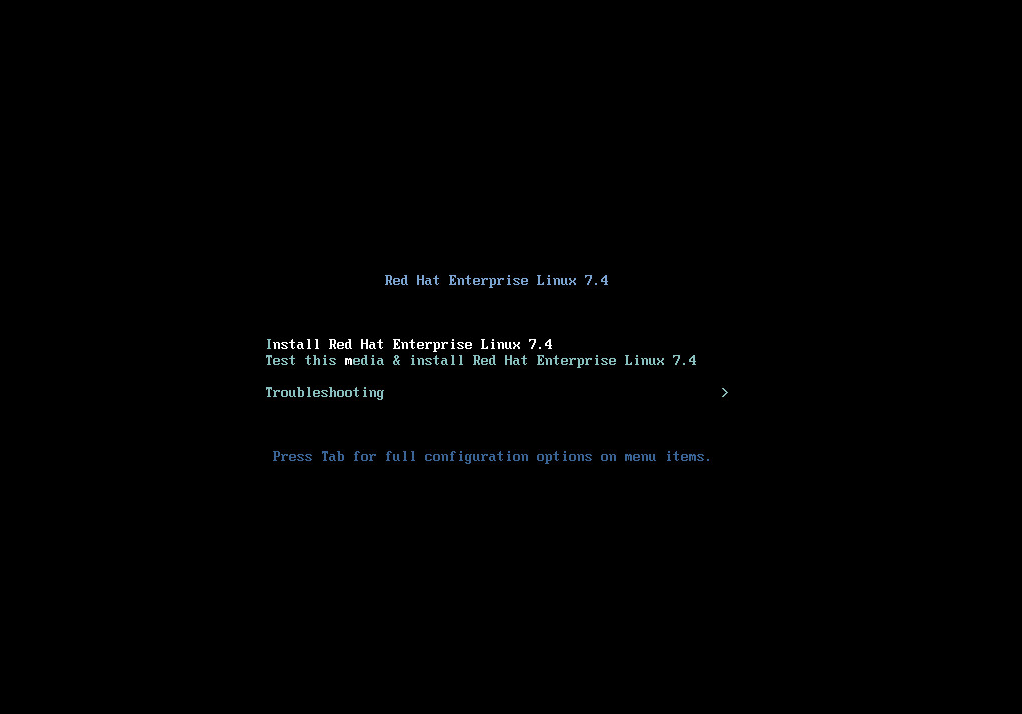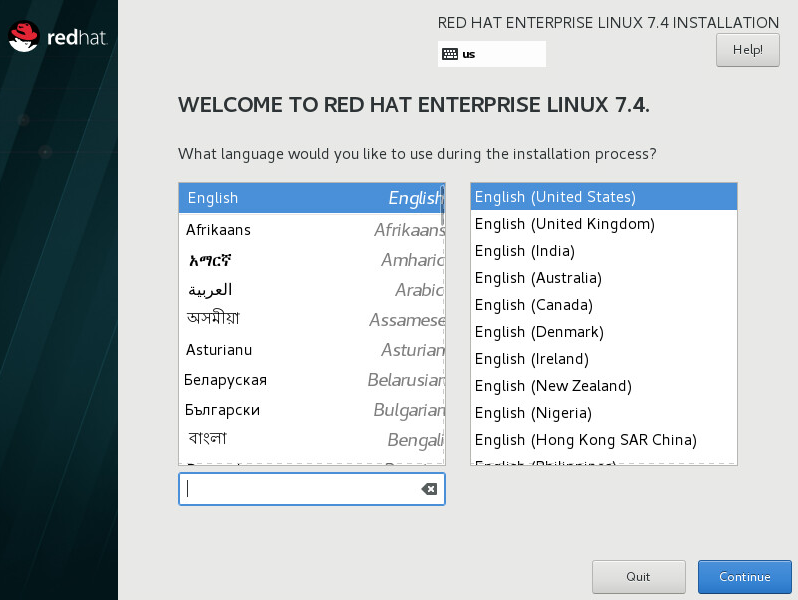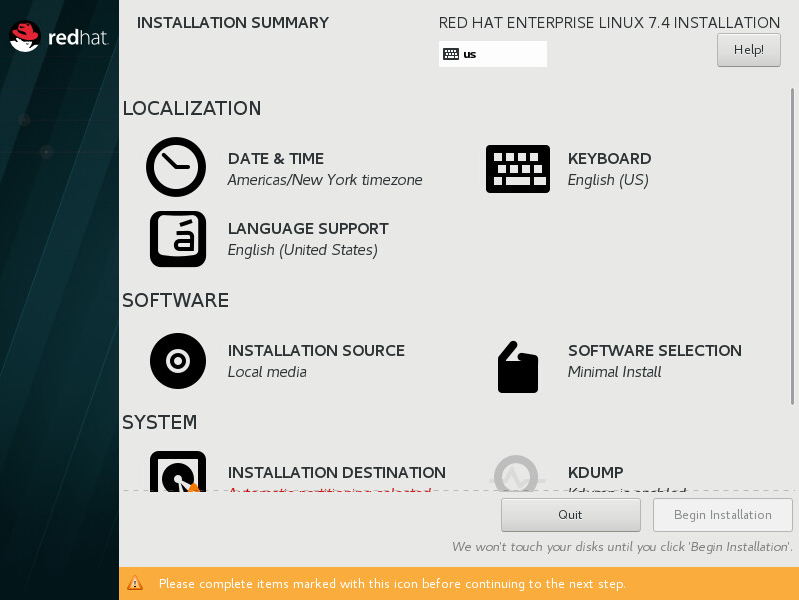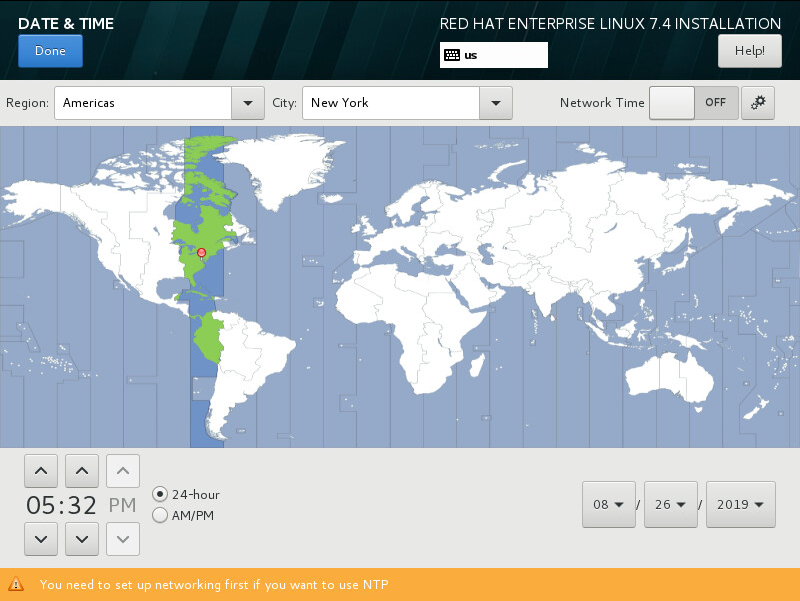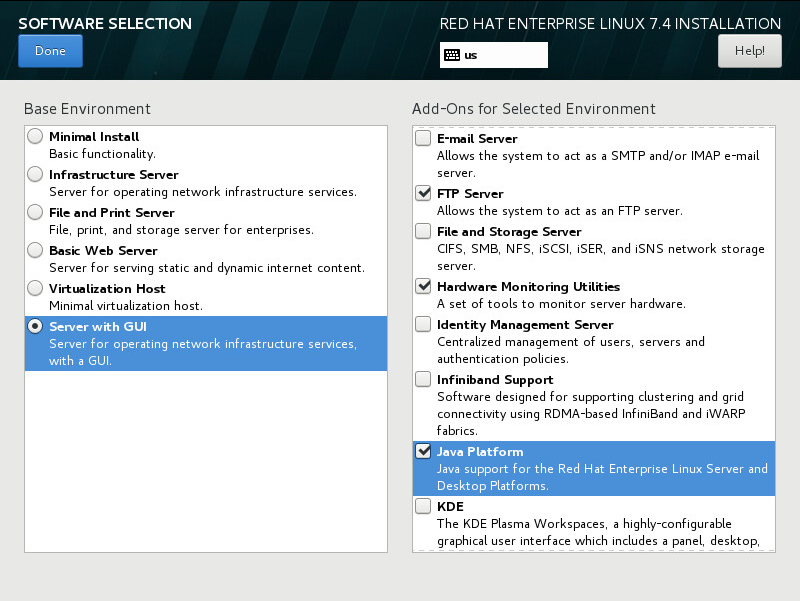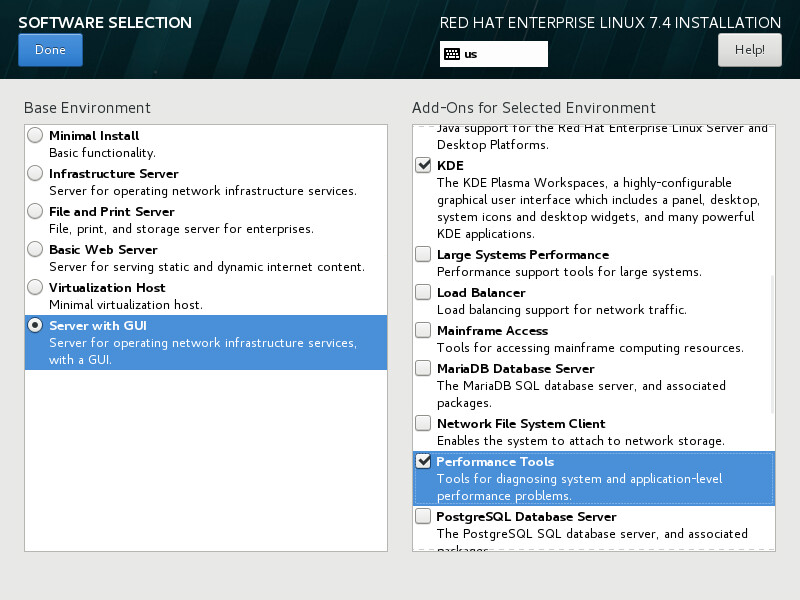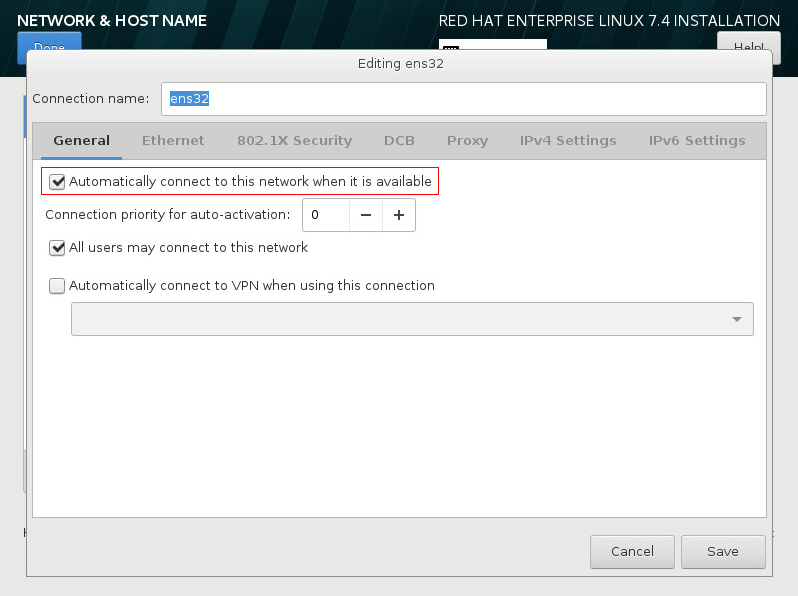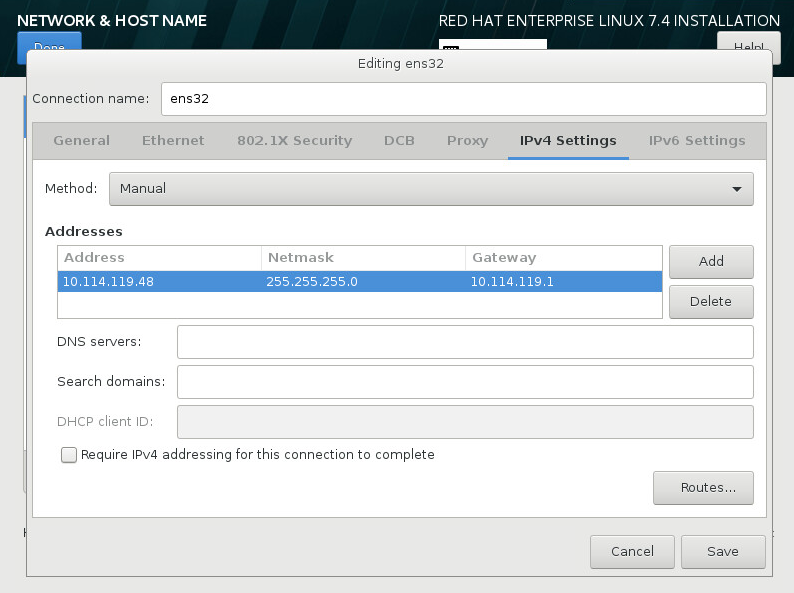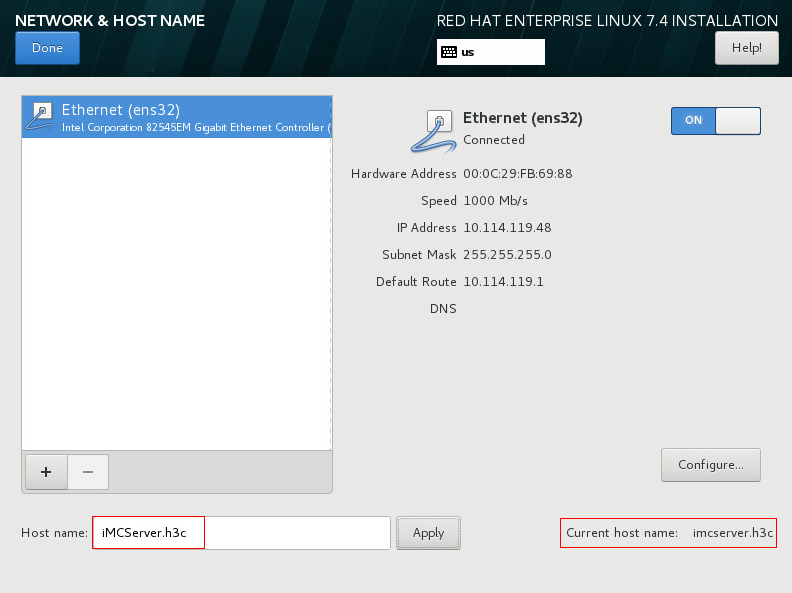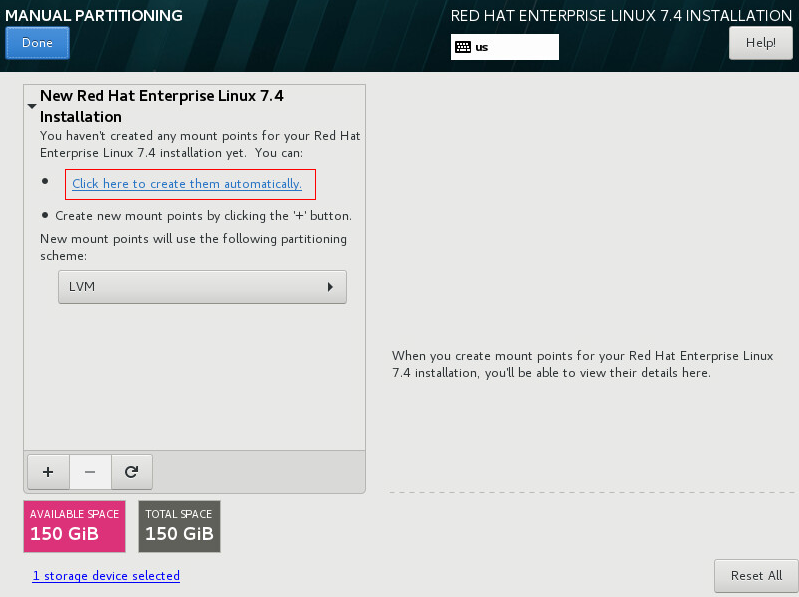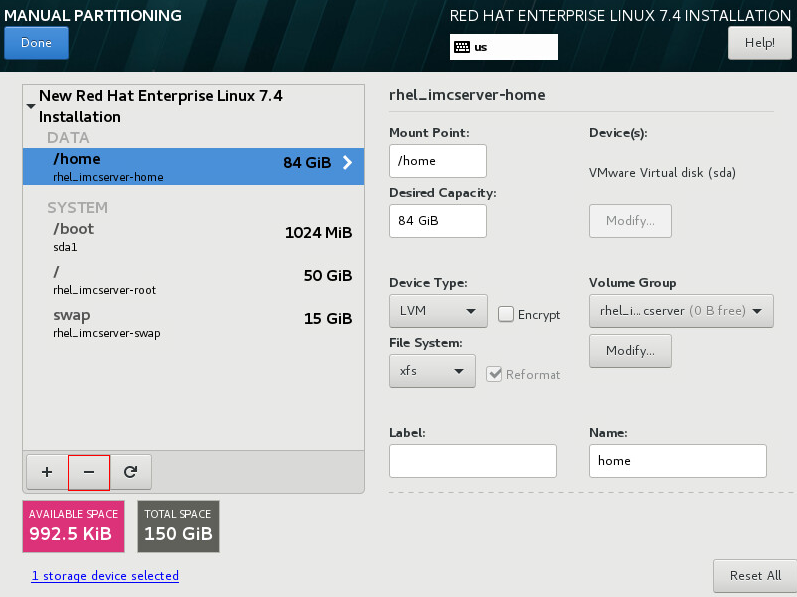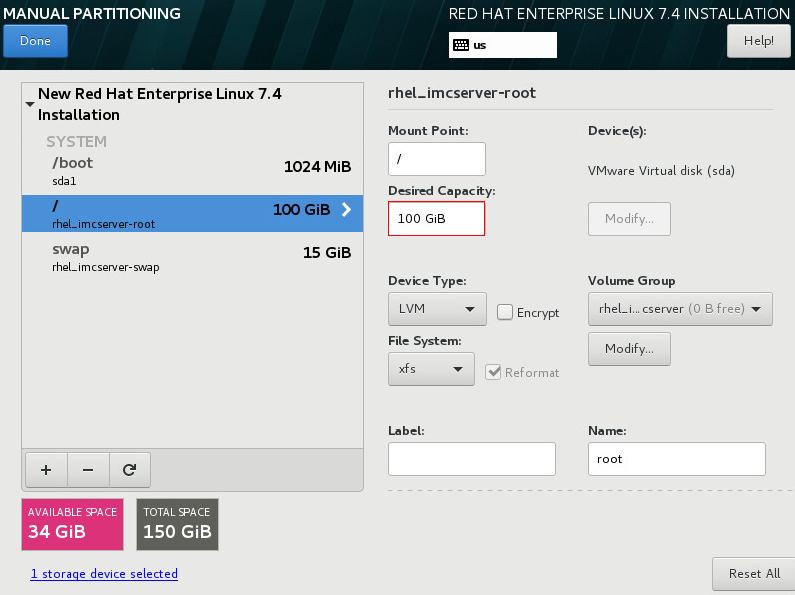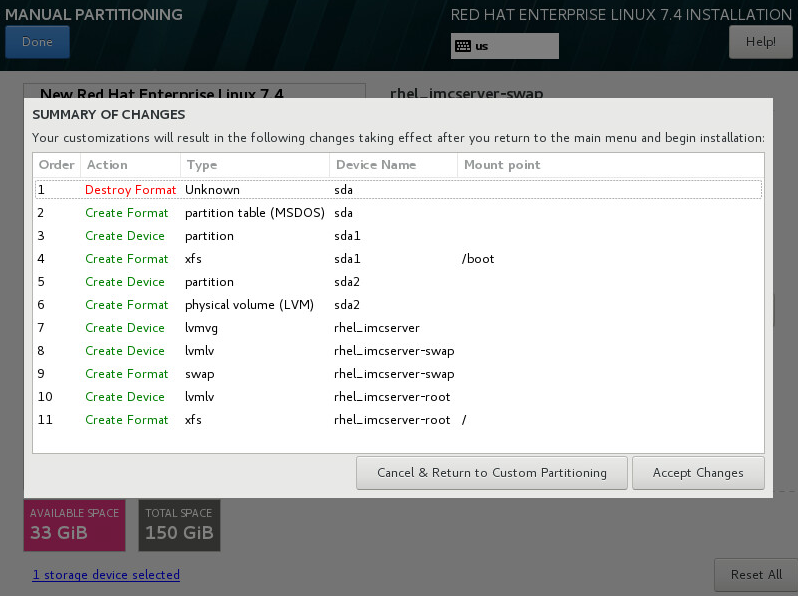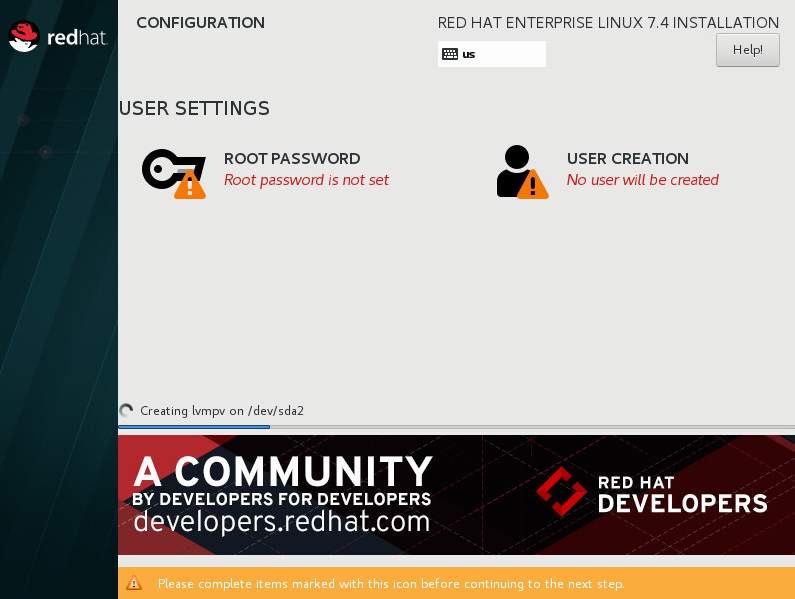- Table of Contents
- Related Documents
-
| Title | Size | Download |
|---|---|---|
| 01-Text | 2.49 MB |
Contents
Collecting system information for installation
Post-installation configuration
Setting the number of file descriptors
Setting the limit of user processes
Installing IMC-required packages
Installation preparation
H3C Intelligent Management Center (IMC) supports Red Hat Enterprise Linux (RHEL) operating systems, including RHEL 7.3, RHEL 7.4, RHEL 7.5, RHEL 7.6, and RHEL 7.9.
IMC on RHEL 7.x requires configuration during and after installation of the operating system. This document uses RHEL 7.4 as an example to illustrate the required configuration.
Hardware requirements
IMC runs on Linux and stores and manages data with Oracle databases. You must install the operating system, databases, and IMC software correctly.
Table 1 shows the hardware requirements and minimum configuration of IMC. The node count, collection units, and online operators columns represent the management scale, and the remaining columns represent the minimum system requirements. For the collection units column, a value range of 0 K to 5 K means performance monitoring is not enabled or a small scale of performance monitoring is enabled. To deploy service components, see the associated release notes for information about the hardware configuration requirements.
|
IMPORTANT: In this document, IMC is installed in the root directory. To install IMC to another partition, make sure the partition meets the hardware requirements in Table 1. As a best practice, reserve a minimum of 50 GB for the root partition. |
Table 1 Linux environment 64-bit
|
Node count |
Collection units) |
Online operators |
CPU (main frequency ≥ 2.5 GHz) |
Memory |
Java heap size |
Disk space for software installation (imcInstallDir) |
Disk space for data storage (imcDataDir) |
|
0 to 200 |
0 to 5 K |
20 |
CPU with dual core |
12 GB |
4 GB |
3 GB |
100 GB |
|
5 K to 50 K |
10 |
200 GB |
|||||
|
200 to 1 K |
0 to 10 K |
30 |
CPU with 4 cores |
16 GB |
6 GB |
3 GB |
100 GB |
|
10 K to 100 K |
10 |
200 GB |
|||||
|
1 K to 2 K |
0 to 20 K |
30 |
CPU with 6 cores |
24 GB |
8 GB |
4 GB |
100 GB |
|
20 K to 200 K |
10 |
200 GB |
|||||
|
2 K to 5 K |
0 to 30 K |
40 |
CPU with 8 cores |
32 GB |
12 GB |
5 GB |
120 GB |
|
30 K to 300 K |
20 |
250 GB |
|||||
|
5 K to 10 K |
0 to 40 K |
50 |
CPU with 16 cores |
64 GB |
16 GB |
7 GB |
150 GB |
|
40 K to 400 K |
20 |
300 GB |
|||||
|
10 K to 15 K |
0 to 40 K |
50 |
CPU with 24 cores |
80 GB |
24 GB |
10 GB |
200 GB |
|
40 K to 400 K |
20 |
600 GB |
To improve server IO performance, follow these guidelines:
· If the number of collection units reaches 100 K to 200 K, install two or more disks and configure a disk RAID module of more than 256-MB memory.
· If the number of collection units reaches 200 K to 300 K, install two or more disks and configure a disk RAID module of more than 512-MB memory.
· If the number of collection units reaches 300 K to 400 K, install more than four disks and configure a disk RAID module of more than 1-GB memory.
· As a best practice, configure RAID5 (that requires three or more hard drives), more than four hard drives, and use RAID 0+1.
Preparing the installation CD
Installation requires the Red Hat Enterprise Linux Server 7.4 installation software suite and software serial number. Set the server to start up from the CD-ROM.
Collecting system information for installation
Collect system information to be used for installation, including the host name, IP address, and network connection information on the target server. You can obtain the IP address and network connection information from the network administrator.
Installing RHEL 7.4
|
IMPORTANT: This procedure only shows pages on which you must make special configurations. The pages that use default settings are not shown. |
1. Start the server from the Linux installation program.
The initial window opens.
2. Select Install Red Hat Enterprise Linux 7.4, and then press Enter, as shown in Figure 1.
Figure 1 Starting Linux installation
3. Select English (United States) as the installation language, and then click Continue, as shown in Figure 2.
Figure 2 Selecting the installation language
4. View the installation summary, as shown in Figure 3.
Figure 3 Viewing the installation summary
5. Click DATE & TIME to modify the time zone setting. This example uses the default Americas/New York time zone, as shown in Figure 4.
Figure 4 Setting the date and time
6. On the installation summary page, click SOFTWARE SELECTION.
7. Select Server with GUI and the following options, as shown in Figure 5, Figure 6, and Figure 7:
¡ FTP Server
¡ Hardware Monitoring Utilities
¡ Java Platform
¡ KDE
¡ Performance Tools
¡ Development Tools
Figure 5 Customizing software settings (1)
Figure 6 Customizing software settings (2)
Figure 7 Customizing software settings (3)
8. Select other options as needed, and then click Done.
9. On the installation summary page, click NETWORK & HOSTNAME. Then, select a NIC and click Configure. In this example, select the NIC named ens32.
10. On the window that opens, click the General tab, and select Automatically connect to this network when it is available to enable auto activation for the NIC, as shown in Figure 8.
Figure 8 Configuring the general network connection settings
11. Click the IPv4 Settings tab, select Manual for Method, click Add to configure the IP address, and then click Save, as shown in Figure 9.
12. On the NETWORK & HOST NAME page, turn on NIC ens32, enter a hostname on the lower part of the page, and then click Done, as shown in Figure 10. This example uses iMCServer.h3c as the hostname.
Figure 10 Configuring the hostname
13. On the installation summary page, click INSTALLATION DESTINATION.
14. On the INSTALLATION DESTINATION page that opens, select I will configure partitioning in Other Storage Options area, as shown in Figure 11.
Figure 11 Installation destination
15. Click Done. On the MANUAL PARTITIONING page that opens, click Click here to create them automatically, as shown in Figure 12.
Figure 12 Manual partitioning (I)
|
IMPORTANT: In this document, IMC is installed in the root directory. To install IMC to another partition, make sure the partition meets the hardware requirements in Table 1. As a best practice, reserve a minimum of 50 GB for the root partition. |
16. Select the /home partition, and then click – to delete the partition, as shown in Figure 13.
Figure 13 Manual partitioning (II)
17. Select the / partition, set the desired capacity as needed, and manually add the root partition to all capacity, as shown in Figure 14.
This example sets 100 GiB as the desired capacity (minimum requirement in smallest node scenarios).
Figure 14 Manual partitioning (III)
18. Click Done. On the SUMMARY OF CHANGES page that opens, click Accept Changes, as shown in Figure 15.
Figure 15 Manual partitioning (IV)
19. On the installation summary page, click Begin Installation. The page displays the installation progress, as shown in Figure 16.
Figure 16 Viewing the installation progress
20. Configure the root password and create a new user as needed. (Details not shown.)
21. When the installation is complete, restart the server.
Post-installation configuration
After installing the Linux system, complete the following configuration to correctly install and run IMC.
Disabling the firewall
1. Log in to Linux as a root user.
2. Disable the firewall.
systemctl stop firewalld.service
systemctl disable firewalld.service
3. Check the firewall state.
systemctl status firewalld.service
Disabling SELinux
1. Open the SELinux configuration file.
vim /etc/selinux/config
2. Set SELINUX to disabled.
SELINUX=disabled
3. Save and close the file.
4. Restart Linux to validate the configuration.
Setting the number of file descriptors
1. Log in to Linux as a root user and view the number of file descriptors.
ulimit –n
2. Modify the value if it is smaller than 65535.
vim /etc/security/limits.conf
3. Add the following commands at the end of the file. If the commands already exist, make sure the values are greater than 65535.
* soft nofile 65535
* hard nofile 65535
4. Save and close the file.
5. Restart Linux to validate the configuration.
Setting the limit of user processes
1. Log in to Linux as a root user and modify the limit of user processes.
vim /etc/security/limits.d/20-nproc.conf
2. Change the default value to 40960.
* soft nproc 40960
root soft nproc unlimited
3. Save and close the file.
4. Restart Linux to validate the configuration.
Installing IMC-required packages
|
|
NOTE: · The software packages of RHEL 7.x are located in the Packages directory of the installation CD. · The software package version numbers might vary by RHEL version. · RHEL 7.x does not provide the compat-libstdc++-33 installation package. As a best practice for correct IMC operation, download it from the website. |
To ensure correct operation of IMC, install required 32-bit software packages on RHEL 7.4 with the root user privileges.
rpm -Uvh --force --nodeps glibc-2.17-196.el7.i686.rpm
rpm -Uvh --force –-nodeps libaio-0.3.109-13.el7.i686.rpm
rpm -Uvh --force –-nodeps libgcc-4.8.5-16.el7.i686.rpm
rpm -Uvh --force --nodeps libstdc++-4.8.5-16.el7.i686.rpm
rpm -Uvh --force --nodeps nss-softokn-freebl-3.28.3-6.el7.i686.rpm
rpm -Uvh --force --nodeps compat-libstdc++-33-3.2.3-72.el7.i686.rpm

